If you’re new to home heating oil, you may be wondering how to read an oil tank gauge. Or for that matter, how much oil does a heating oil tank even hold? In this post we’ll break down the different types of oil tank gauges and how to read them.
Types of Heating Oil Tanks
Home heating oil, like propane, is a ‘delivered fuel’. This means it must be delivered to your house on a truck, rather than supplied directly to your house like natural gas or electricity. As a result, you must store heating oil in a holding tank at the house.
Heating oil tanks can be found indoors in a garage or basement (most common), outdoors just outside the house (less common), or even buried under the ground (least common). Indoors is the best place for a heating oil tank because it is safe from the elements. Just imagine what rain, sun and snow can do to a steel tank over time. An indoors location will shield the tank, and make any leaks or issues easy to spot.
Buried Tanks
Buried oil tanks are less common today than they once were. The problem with buried tanks is they can leak over time without anyone knowing. This can make for a very expensive removal and remediation process. Once a buried tank reaches 30 years of age, it is recommended to have it removed and replaced with an above-ground tank, preferably indoors.

Above-Ground Tanks
Above-ground tanks are much preferred to buried tanks. Detect leaks faster and be proactive with your tank maintenance with an above-ground tank.
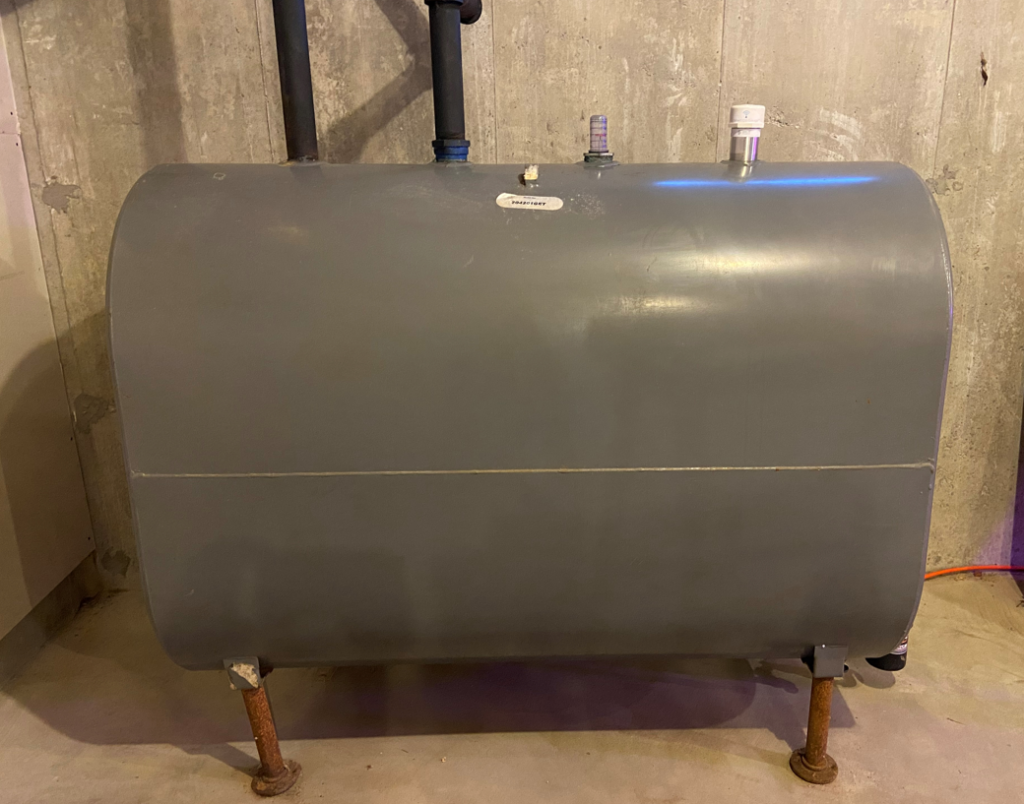
Types of Tank Gauges
Above-ground heating oil tanks typically have a float gauge up top. A float gauge relies on an arm with a floating end to it (picture a cork) that moves up and down with the oil in the tank.
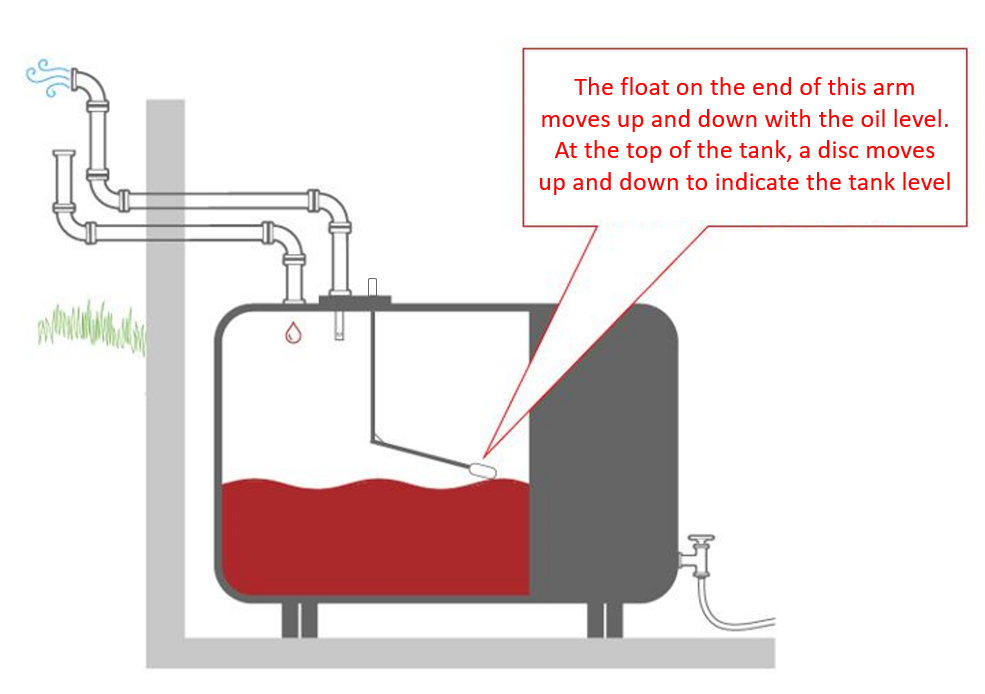
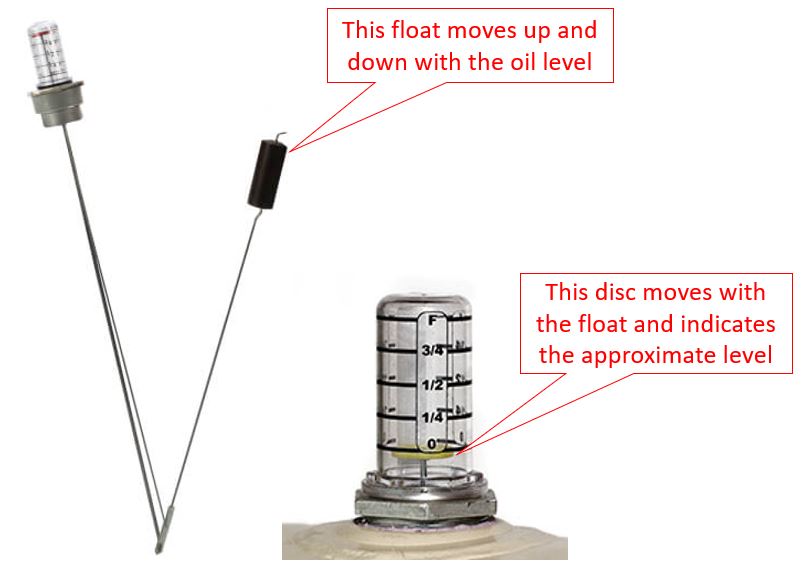
Smart Oil Gauge
A much more precise way to measure your heating oil tank is by using an ultrasonic sensor such as that found in a Smart Oil Gauge. With the exception of the top 8″ of the tank, the Smart Oil Gauge will provide readings within a few gallons in your tank.
To check your heating oil level with the Smart Oil Gauge, simply open the app. It will display the level, in gallons, as well as some usage statistics. You will see how much oil you are using and when you will need to order heating oil next.
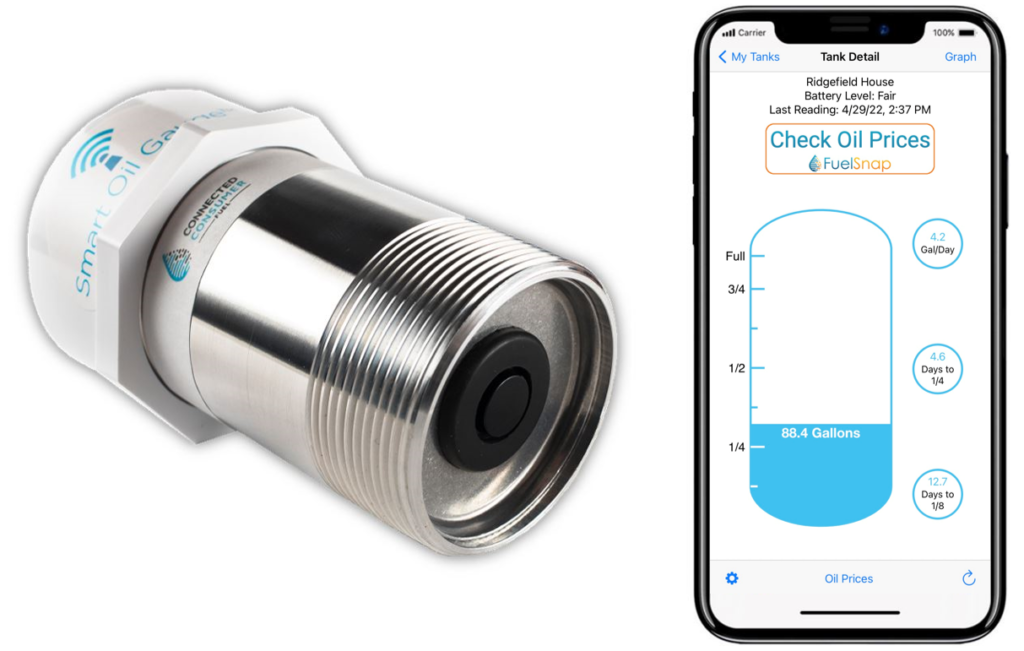
How Much Oil Can I Order?
Based on the size of your tank and how much oil is in it, you should know how much you can order for your tank. Follow this guide here to determine how much heating oil you can fit in your next delivery. For tanks beyond the standard 275 and 330 gallon tanks, use this tank chart here.
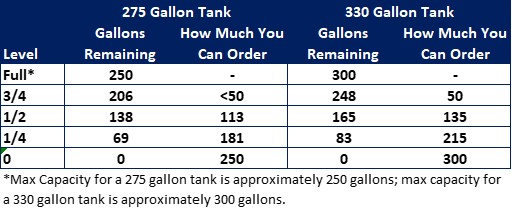
Refer to a Tank Chart For the Most Precise Reading
To be absolute sure your float gauge or Smart Oil Gauge is providing a perfect reading, grab a tape measure. Measure your tank to confirm its dimensions. Then, place a yard stick inside the tank to measure the height of the oil in the tank. Check the tank chart for you tank here and you’ll know how much oil is in the tank.
Happy heating,
Steve
